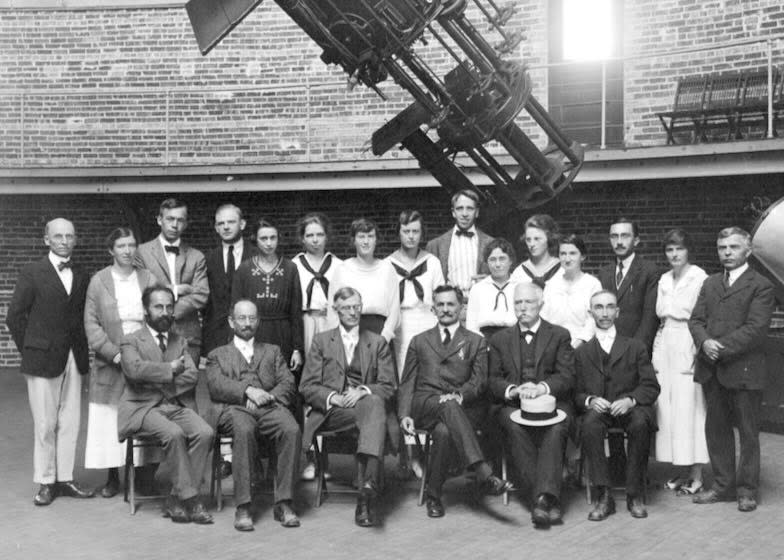Pioneer Women Astronomers Flourished a Century Ago
In the history of science, notable women can seem like a rarity. Astronomy is no exception. While many people recognize names like Galileo, Copernicus, and Hubble, they would be hard-pressed to name pioneers of the opposite sex. However, new research from the University of Chicago could help change that perception. More than 100 years ago, female astronomers flourished at the Yerkes Observatory in Wisconsin, and the work they did went well beyond simple stenography and computation.
Women Advancing in the Early 20th Century
In compiling the exhibit “Capturing the Stars: The Untold History of Women at Yerkes Observatory” Regenstein Library curators Andrea Twiss-Brooks and Kristine Palmieri assembled a large collection of photographs, notes, journals, and research tools from around 1920. They demonstrate that women have played an important role in the history of astronomy—at least, when given the chance to do so. Even though the exhibit has closed, the research is ongoing.
“We wanted to underscore the number of women who were at Yerkes, as well as the scope of their research, and the work that they did,” Palmieri told Worth. “Conventional narratives about the history of women in astrophysics tell us that you either have exceptions, or you have women who were doing rote, unskilled calculations. What we found when we started looking in our archives was that the stories of these women actually challenged those narratives.”
Approaching Equality
Readers may be familiar with the fascinating story of female “computers” from the popular book Hidden Figures, or its film adaptation. These mathematicians worked through thousands of complex cosmological calculations, well before electronic devices were sophisticated enough to do the same. But Palmieri and her colleagues discovered that, unlike those women, the researchers at Yerkes were pursuing their own original research, not just supporting male colleagues.

“The work at Yerkes was not gendered in conventional ways,” Palmieri said. “We also have evidence that they were taking photographs themselves…We also know that women were observing using the telescope, and that they were doing very technical research.”
Palmieri also pointed out that many of the women at Yerkes were graduate students, proposing and testing new ideas alongside their male colleagues. “We have a couple of publications, actually, that were coauthored by men and women.”
Women Astronomers Through the Ages
“Capturing the Stars” provides a concrete example of women in astronomy becoming the norm. But, as Palmieri observed, you can find female astronomers in every period of history.
“We could honestly go all the way back to Antiquity,” she said, referencing Aglaonice of Thessaly (2nd or 1st century BCE) and Hypatia of Alexandria (4th century CE).
Female astronomers also flourished during the Renaissance. Palmieri was particularly pleased to share the story of Margherita Sarrocchi (1560 – 1617), an Italian astronomer who corresponded with Galileo. The two discussed Galileo’s scientific findings, as well as Sarrocchi’s poetry. In 1611, it’s likely that they met in person.
By the 18th and 19th centuries, women were a regular fixture on the astronomy scene. However, they usually worked with their husbands and other male family members.
“The Herschels are a really famous example,” Palmieri said, “where Caroline Herschel [1750 – 1848] was deeply involved in the research of her brother and her nephew.”
Still, these women were usually the exceptions, rather than the rule. What struck Palmieri and her colleagues about the Yerkes Observatory was how normalized their presence was.
The Present and Future of Women Stargazers
Today, astronomy seems to be a more welcoming place for women than ever before. Women receive more than one-third of all astronomy degrees, and their faculty presence has been increasing accordingly. While the field has yet to achieve gender parity, the numbers are getting better, year over year.
Palmieri believes that this creates a virtuous cycle, as female faculty members mentor and encourage female undergraduates. This supportive arrangement, she said, is in effect at the University of Chicago today, just as it was in effect at Yerkes 100 years ago.
She also observed “how determined these women were.”
“They could have earned more money teaching,” she said. “They could have made other choices. But one of the things that we’ve seen in looking at these materials is how they, themselves, are making their decisions…They’re active agents in their own destinies.”
